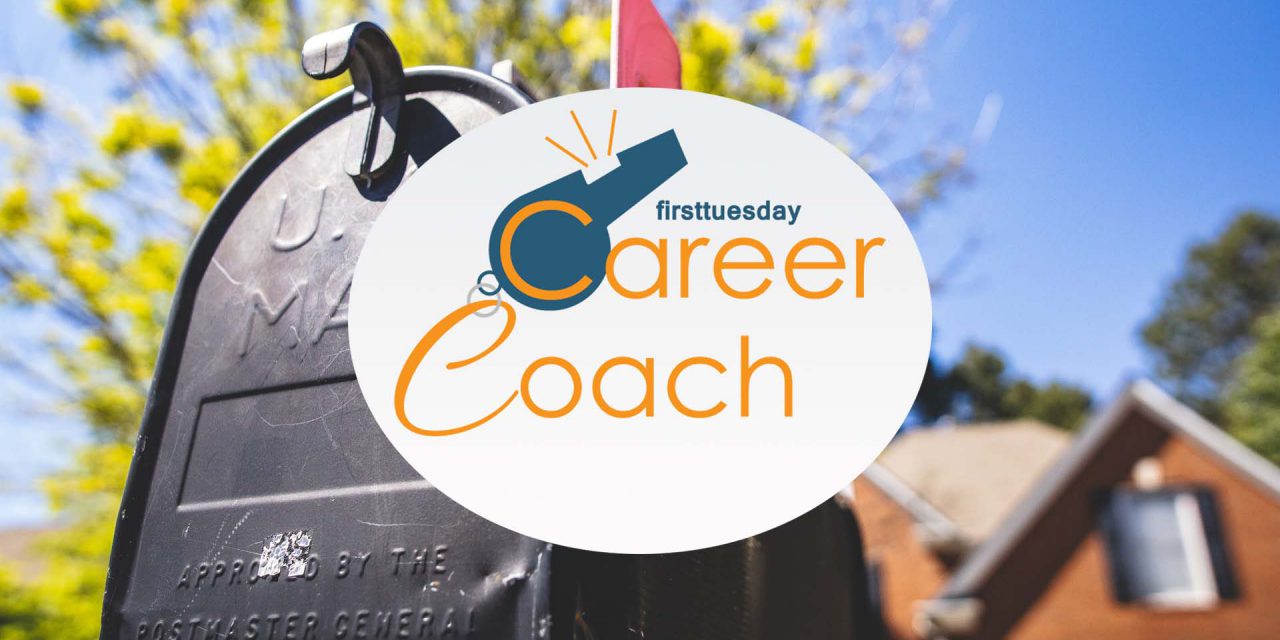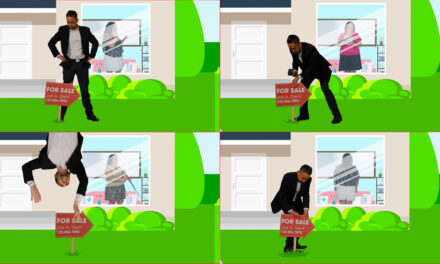The following is an excerpt from the new edition of the firsttuesday Career Manual, a best practices guide to help new real estate licensees establish their personal brands and boost income. In this excerpt, we focus on direct mail marketing.
Your use of direct marketing
Direct marketing is a means of bulk advertising you send to owners and tenants within your FARMing community. You accomplish direct marketing via United States Postal Service (USPS) snail mail, email, texting, YouTube, or social media. Think of it as marketing in bulk – a mass approach to reaching multiples of people, quite different from your personal face-to-face contacts.
Direct mail marketing is a packaged piece of physical mail periodically sent to your list of contacts through the USPS mail delivery service, blasting out your message consistently.
Direct mail marketing requires you to focus on the content of the materials you send out, separate and in addition to your spontaneous, personal face-to-face interactions which traditional FARMing accommodates.
How is direct marketing using USPS mail different from email marketing?
Direct mail marketing through USPS mail has a lasting impact. Unlike an email, direct mail is tangible, persistent — Importantly, a recipient of a direct mail envelope actually opens it and much of the content sits on the desk or counter of your contact for weeks (or more). While email is cheaper, it has a short shelf life. When an email isn’t opened the day you send it, it’s likely to get deleted without your contact ever reading it —much less saving it for future reference.
Contacts often call years after receiving a piece of mail from a direct mail marketing campaign — that’s how long someone will hold onto a piece of paper or other printed material. It’s the same reason you constantly hand out business cards – they tend to keep them.
How to get started
Ask yourself three questions:
- Who are my contacts?
- How will you acquire the addresses of potential clients?
- Will you purchase a list? Or ask a title company for a list of property owners in your FARM?
- How am I going to create my material?
- Will you originate your materials, or will you find them elsewhere?
- Will you print out materials with your own machine, or use a local printer?
- What is my budget?
Knowing the answer to these three questions will prepare you to initiate your own direct mail campaign.
Narrow your target
Send materials to whoever is most likely to engage you in their transactions.
When you specialize in helping renters become first-time homebuyers, mail to renters in your area whose rents are close to mortgage payments on a home. Likewise, when you’re looking for new listings, it’s not productive to send materials to someone who just purchased their home last month.
Research into county public records of owners will be helpful in narrowing your targets. Most owners occupy the property. Those owners who rent it out have a different mailing address and no home ownership exemption.
What type of marketing material to mail
The type of physical material you mail depends on your budget. But — when you can afford it — colorful, heavyweight paper is best.
Further, your physical marketing materials do not need to be limited to letters or postcards. Consider mailing – and handing out – “premiums” your customers can use at home, such as:
- pens, key fobs, big clips;
- notepads, magnets, coffee cups;
- informational booklets; and
- calendars.
As a rule of thumb, the more valuable the item appears or the greater the utility, the longer your contact will hold onto it — and the more likely the customer will remember to call on you for assistance.
In all instances, include:
- your image (logo, face, name, etc.);
- the service you provide (sales, rentals, mortgages, etc.); and
- your contact information.
Further, be sure to include your California Department of Real Estate (DRE) license number, Nationwide Mortgage Licensing System (NMLS) ID number (if you hold one) and your employing broker’s identity.
How much will it cost?
When comparing response levels for emails and physical direct mailings, contacts consistently respond more often to direct mailings. Thus, direct mail has more value simply because it’s tangible, has to be handled, and lasts longer.
But there are limits and it’s relatively expensive in time and money to start.
Your cost will depend on:
- the type of materials you send;
- quantity; and
- postage rates.
You qualify for a reduced bulk postage rate when you send out enough envelopes bundled in a mass mailing – at least 200 pieces of mail.
As ballpark figures, when you send a regular envelope to 1,000 homes a month, you can expect to spend about:
- $350 in postage with the bulk rate;
- $275 for envelopes; and
- $200 for 8 x 11 letterhead.
When you’re trying to save, consider printing address labels with your own printer (though be sure to budget for ink costs). Or, if cost isn’t a big issue, shop around online for a mail service to do everything for you, from printing your materials to addressing envelopes and sending them directly to your contact list.
Frequency of mailing
Agents need to send out materials as often as they can afford to without creating a cash flow issue for their business. Your marketing strategy should be a constant reach — the more often you mail, say monthly, the better for branding and producing clients.
You may do this in conjunction with your traditional FARMing campaign to increase awareness within your area of your brand. For a real estate agent, branding is the result of taking every opportunity to get your name out to potential clients and existing customers so they recognize and identify with you – they’ll sense a bond.
Fundamentally, it’s all about name recognition.
Is it working?
You can find out when your marketing strategy is working by simply asking your new clients, “How did you hear about me?”
To be more precise, track the response rate for your marketing efforts. By putting reference codes – tracking – on your materials for feedback when new contacts reach out to you and asking how they found out about you. Also, have a code for referrals from prior clients, social and civic acquaintances, other agents and the like.
Keep in mind that every email or direct mail is a test about the effectiveness of different material and different target groups of clients, contacts, and mail campaigns. However you choose to implement your mailings, be sure to keep track of everything. Tracking includes:
- how much you spend on materials, printing and postage;
- who you mail to;
- what type of materials get the best response; and
- who responds to your marketing.
Keep in mind that one listing gained from direct mail pays for more than the cost of sending out materials for an entire year. And when your client is satisfied, that will result in referrals, a valuable multiplier effect when you keep in contact with them. Remember, your best source of new business is past clients.
Final advice to get the response you want
Spend time on wording the envelope or the packaging. Understand that when someone isn’t enticed by the wording on an envelope to open it, your effort is all for nothing.
You don’t want your mailings to look like junk mail, and the copy shouldn’t be boring. Generally, heavy envelopes work great. Or skip the envelope altogether and go for a postcard to reduce postage and printing costs. Test different types and discover which works best for you. Postcards are generally less effective than an envelope stuffed with a letter, business card and brochure.
As you get to know your clients, tailor your materials to keep their attention.
Start off small. Test different words and designs. The response you get will tell you what works and what doesn’t. It’s the learning process both entrants and seasoned licensees go through with every mailing. And when you keep track of the results from your marketing campaigns, you’ll be able to adjust your marketing strategy to best work for you and your clients.














